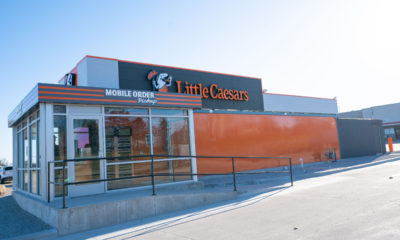Late in the last century, when technology was threatening to do away with retail as we know it, the reassuring mantra was, “Don't worry, people will always need the shopping interaction.”
In the new Internet culture, the reasoning went, people who spent the day communicating only with their computers, phone modems, faxes and printers needed to get out and socialize.
Some retailers countered with the notion that if people liked doing business at a screen and keyboard, let's give them screens and keyboards in the store. So-called “kiosks” began popping up in stores all over the country.
It didn't work. It assumed people would come into the store to get on a computer, when that's why they got out of their bathrobe and out of the house in the first place: to interact with something other than a clunky screen.
That was then. Now, go out shopping. See people clustered around some kind of screen. They're expressing a preference for checking out their groceries and doing their own bagging. See them get their own movie tickets, boarding passes, railroad tickets, subway tokens. See them complete their gas-pumping, bill-paying and banking automatically. Soon, we're told, they'll be able to punch in their meals at a fast-food joint, pay at a machine and never again be asked, “Do you want fries with that?”
Advertisement
What happened to the need for social interaction? Four things, it seems. One, the technology kept improving. Easy-to-operate touchscreens with bright colors replaced grubby number pads and blurry monitors. Information downloads more quickly and transactions are executed more efficiently. Hulking cabinetry has been replaced by streamlined, easy-to-see-and-use stations.
Two, those interactions with store personnel were too often less than satisfactory. Be told “I can't help you,” by more than one sales associate, and shame on them. Be told “I can't help you,” by more than one rude sales associate, and shame on you.
Three, these interactive systems are embraced by retail's top management. They allow the accumulation of information that helps manage inventory, supply chains, customer credit, buying habits, marketing efforts and ultimately costs, producing profitability even in a flat economy.
And four, do the math! I recently read that installing a typical airport kiosk costs around $10,000 and the operating system costs about $80,000. Compare that with the perhaps $40,000 salary of a customer service agent, plus benefits. The system begins paying for itself in around 15 months and then cuts the cost of the typical transaction in half. There are no sick days, vacations, scheduling issues. And a computer won't cop an attitude – you won't hear, “sor-ry, I'm on my break.”
Not yet, anyway. But hey, the technology is still evolving.

 Headlines1 week ago
Headlines1 week ago
 Headlines1 week ago
Headlines1 week ago
 Headlines1 week ago
Headlines1 week ago
 Designer Dozen2 weeks ago
Designer Dozen2 weeks ago
 Headlines6 days ago
Headlines6 days ago
 Headlines2 weeks ago
Headlines2 weeks ago
 Headlines3 days ago
Headlines3 days ago














